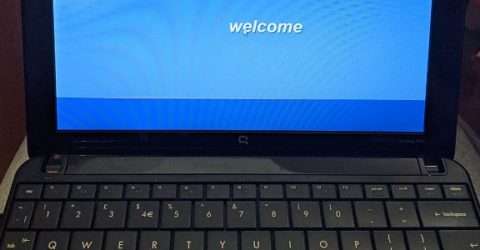A brief history of the PC
Having been elevated to essential-purchase status by the internet, the history of the PC is as fascinating as the machine itself is mundane

Throughout human history, few objects have been as unfairly maligned as the humble personal computer.
It was dismissed in the 1980s as being a boring beige box, in the 90s as the haunt of nerdy gamers and hackers, and in the Noughties as lacking the portability of laptops.
When Apple’s first-generation iPad debuted in 2011, the PC’s obituary was written by a thousand newly-anointed tablet devotees.
It’s interesting that in the subsequent ten years, tablets have tried to adopt PC functionality and performance, just as much as PCs have attempted to emulate tablet aesthetics and minimalism.
Indeed, the history of the PC is far richer and more intriguing than many people assume.
Unclear antecedents
There’s often debate about where new technologies originated, and which device can be considered the first in its particular genre or industry.
Similarly, the history of the PC lacks a clear genesis, with a number of machines variously described as the first of their type.
The term ‘personal computer’ was first published in 1962 in the New York Times, six years before Hewlett-Packard advertised their 9100A machine as being a personal computer.
Inevitably, Apple became a pioneer in this fledgling market, marketing its 8-bit Apple II as a personal computer.
The first generation of microcomputers (including the Apple II and Commodore PET) were often referred to as ‘home computers’, to distinguish them from office-oriented machines.
The latter market was led by IBM, who made many of the 1960s commercial machines and 1970s minicomputers. However, microchip technology soon rendered these obsolete.
The history of the PC took a decisive step forwards with IBM’s response to the Apple II – the 1981 IBM PC, which also introduced a disc operating system, or DOS.
PC DOS would gradually become a dominant OS, with its lineage extending into Microsoft’s MS-DOS – in turn morphing into the Windows operating system we know today.
The ability of early 1980s machines to store information on 3.5-inch floppy discs (more reliable than cassettes and sturdier than 5.25-inch discs) also proved transformative.
For most of the 1980s and 1990s, 3.5-inch discs were the default file storage platform, and every PC came with a disc drive.
Some additionally offered storage in other formats like ZIP drives or CD-ROMs, supporting data-heavy programs and generous quantities of external storage.
However, it was the arrival of the World Wide Web in 1991 which elevated the PC to must-have status.
In an age when mobile phones were strictly for calls and texts only, a PC represented the obvious path to the promised land of the internet.
From the mid-1990s onwards, PCs appeared in homes around the world. Hardwired into phone sockets via modems, they provided most of us with those unforgettable first online experiences.
In the here and now
Even as the new Millennium dawned, PCs remained rather worthy, and often aesthetically challenged.
In the subsequent two decades, the emergence of laptops and tablets as credible alternatives forced PC manufacturers to up their design game.
Today’s PCs sport mesh aluminium cases, LED lighting and even detachable touchscreens – the latter directly inspired by the slimline portability of tablets.
Hardware specifications in high-end PCs have remained ahead of rival hardware, making them the default choice for gamers and many creative professionals.
And while Apple have carved a distinct niche, it’s hard to view a MacBook as anything other than a PC, even if this term officially only relates to a Windows-powered computer.
MoreLooking back on 40 years of home computing
Forty years after the IBM PC debuted, the personal computer remains popular. Global sales in the final quarter of 2020 were up by 10 per cent on 2019’s figures, reaching a ten-year high.
This reflects not just the growing adoption of home working throughout the pandemic, but also the timeless appeal (and unique benefits) of a standalone PC.
You can’t hardwire a tablet to your broadband router via Ethernet, any more than you can play immersive multiplayer games on a five-inch smartphone screen without a keyboard or mouse.
For many tasks, careers and hobbies, the PC remains an indispensable piece of equipment.






